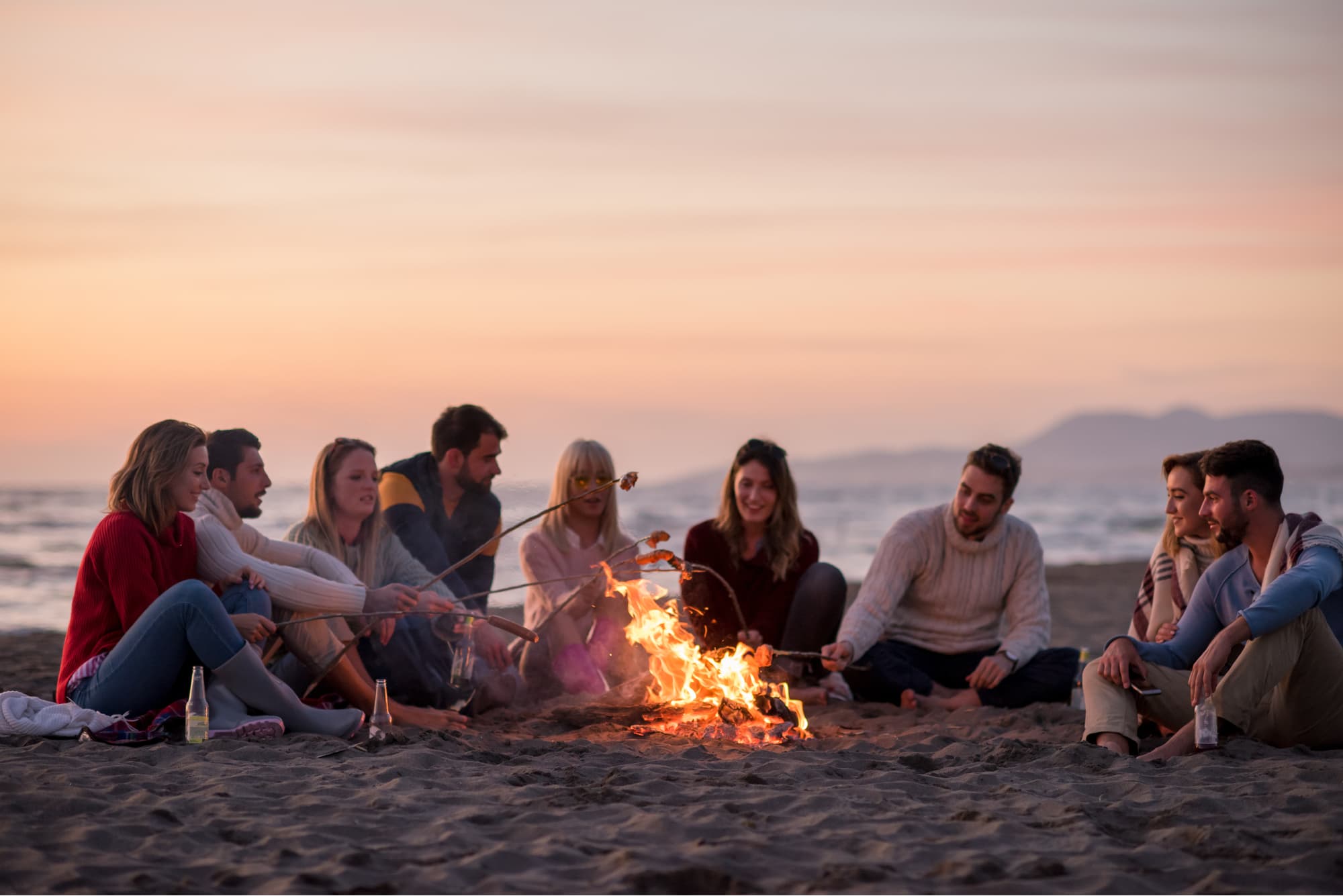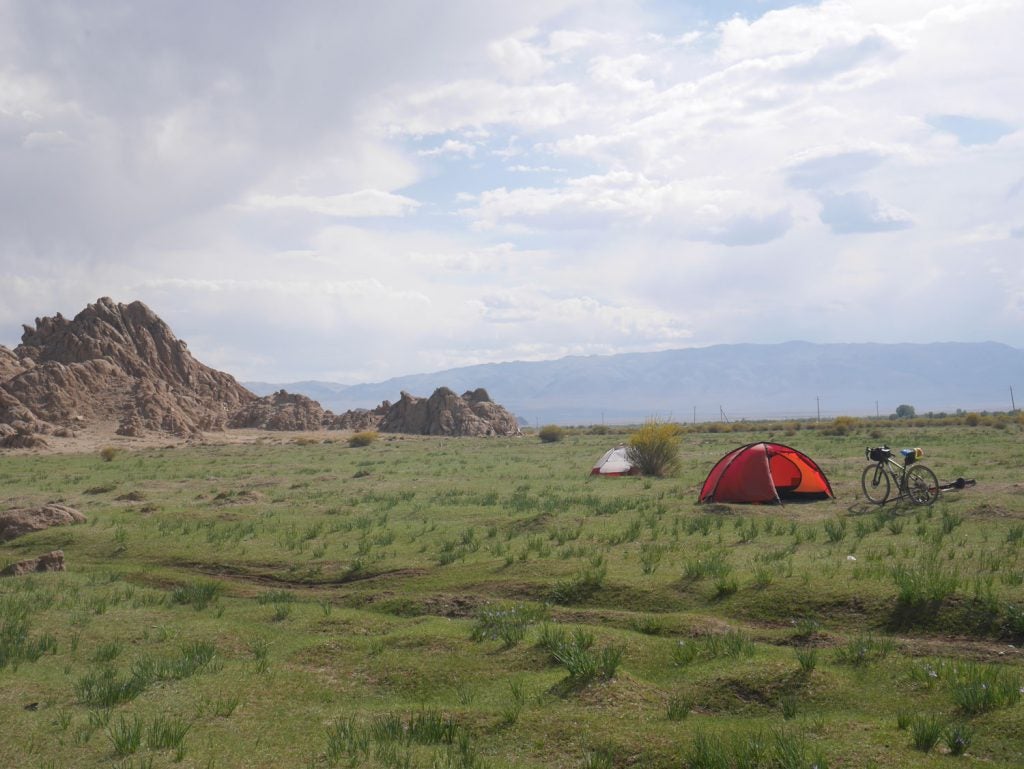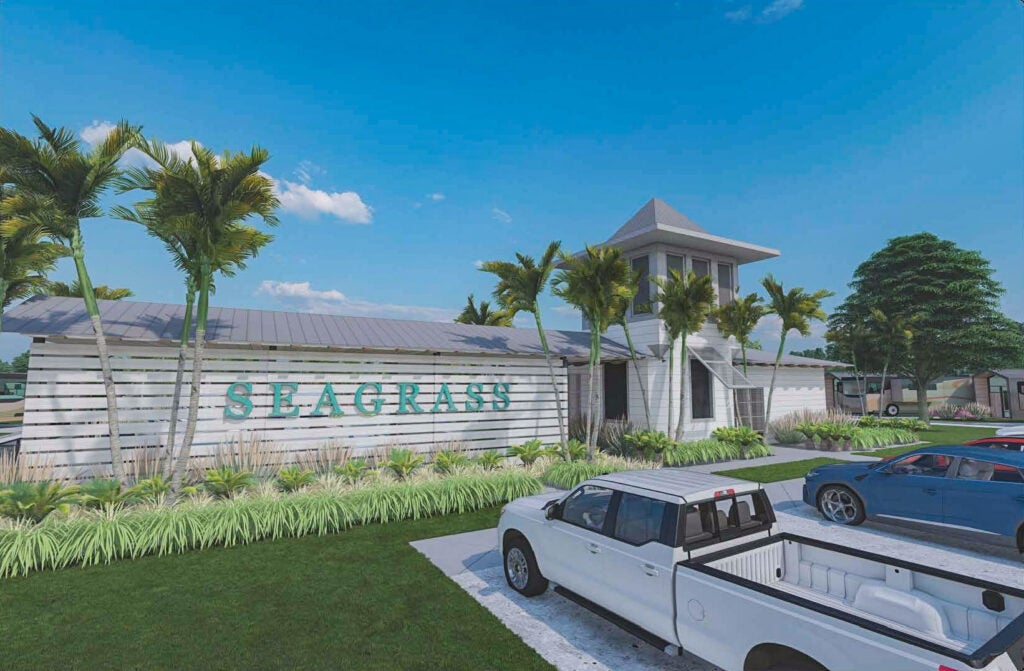Whether you’re spending the day surfing, or camping on the beach, there’s something magical about watching the sunset by the flickering warmth of a beach bonfire, backed by the sound of crashing waves. But it’s important to consider the environment, every time you build a fire.
Some would argue that building a beach bonfire in the sand where there is no designated fire ring is not environmentally friendly. And yes, we tend to agree, and do not recommend building fires wherever you want.
That said, there are plenty of beaches that provide safe and responsible fire pits. Use these whenever possible!
Many campgrounds on the Oregon coast provide fire rings, and most California beaches allow bonfires. Ocracoke Island in North Carolina requires a ferry to reach, but once you’re there, you’ll find 16 miles of beaches where you’re allowed to build a fire. In Cocoa Beach, Florida, you’ll need a permit before setting up your pit. Wherever you’re headed, check in on local regulations and the availability of fire rings.
If you are going to build one yourself, it’s important to be diligent about using minimal resources and leaving no trace.
How To Build a Beach Bonfire and Leave No Trace
1. Choose Your Site
First, look into whether the beach you’re on allows campfires. Ask a lifeguard or check local signage or the park website to see if there are fire bans or rules against campfires. National Parks and other public lands will feature this info on their websites under the “Alerts” or “Regulations” section. You can also check in with a visitor’s center for the latest on fire bans and rules.
The best place to start a beach bonfire is in a pre-designated fire ring. If there are no fire rings but fires are allowed, look for a spot above the line where the water stops at high tide. You can tell by the salt lines on a dock or by looking for areas where debris has collected in a line on the beach.
Make sure to also select a place that is far from potential fire hazards like brush or trees.
Want an adventure of your own? Find free camping near you
Did you know that almost all states in the US have free camping?
Although, some of it is not-so-great and can be hard to find.
There is an easier way:
- Hand-picked free campsites
- Pre-saved to your phone
- The best in all 50 states
It’s the only hand-picked list of 5,000 free camping locations that you will find anywhere.
It comes with a bunch of other features like last-minute camping texts, offline maps, etc.
You can check it out for free today by starting a free 7-day trial. After the 7-day trial, the membership is just $35.99 for a full year of access — well worth it if you camp more than 2 times per year.
2. Prepare The Fire Pit
Dig several inches of sand out of the middle of a three-foot area. This will place your fire pit lower than the rest of the beach so the bottom sand will be wet, reducing your likelihood of spreading the fire.
The elevation difference will also protect your flames from the wind. If you spot some larger rocks you can build a fire ring to add additional wind blockage. (But remember, the more things you move or disrupt to build your fire, the more clean-up you’ll have to do after.)
3. Collect Wood
Collecting firewood can be tricky on a beach. Some areas acquire plenty of driftwood because of how the water moves onshore. Others are rimmed by forests providing ample resources for beach fires. Collect a smattering of smaller sticks and larger wood from the ground to sustain your fire.
Follow LNT principles and do not remove branches from living trees. This can harm the tree, plus live branches are more difficult to burn and often create excess smoke. Collect wood of various sizes as well as dry leaves, pine needles and bark from fallen trees to serve as tinder to start the fire.
4. Build a Structure
Many people build small cone-like structures before lighting a fire. While this works, a log cabin-style creation is often a better solution at the beach as it stands up better to the wind.
Start by lying down a small nest of fire-starting materials like small twigs, grass, or dry seaweed. Then, place two pieces of smaller driftwood or sticks parallel to one another with your tinder in the middle. Next, place two pieces of similar-sized wood on top of the gaps between the first sticks to create a square.
Repeat this process until you have a structure several inches tall that resembles Lincoln Logs.
5. Light Your Fire
Use a lighter or a match to start your beach fire. Once the tinder has burned and the log cabin is on fire you can add larger pieces of wood and logs to increase the size and warmth of your fire. Just make sure to follow any fire size regulations that are in place in the area. Going over this limit could potentially pose a wildfire danger due to flying sparks and embers, so it’s important that stay in line with area regulations.
A beach bonfire isn’t complete without s’mores, so pack some graham crackers, mallows and chocolate in your beach bag!
Always douse the fire thoroughly with water and bury any remaining embers to prevent your fire from spreading when you’re done. Return any rocks to their original location once they’ve cooled, fill in the dugout hole with sand, and pick up any pieces of trash that you may have dropped while enjoying snacks and drinks around your bonfire.
Does the beach look like it did when you arrived? Then congratulations — you’ve successfully hosted a responsible beach bonfire!
Related Articles:
- Oregon Coast Camping
- Florida State Parks Camping
- Campgrounds in Maine
- Campgrounds in North Carolina
- Hunting Island State Park
- Campgrounds in Virginia
- Camping in Northern California
- Whale watching in oregon
- Sleeping Bear Dunes Camping
- Lighthouses in Michigan
- Ocean City Maryland Campgrounds
Popular Articles:
Articles on The Dyrt Magazine may contain links to affiliate websites. The Dyrt receives an affiliate commission for any purchases made by using such links at no additional cost to you the consumer.



